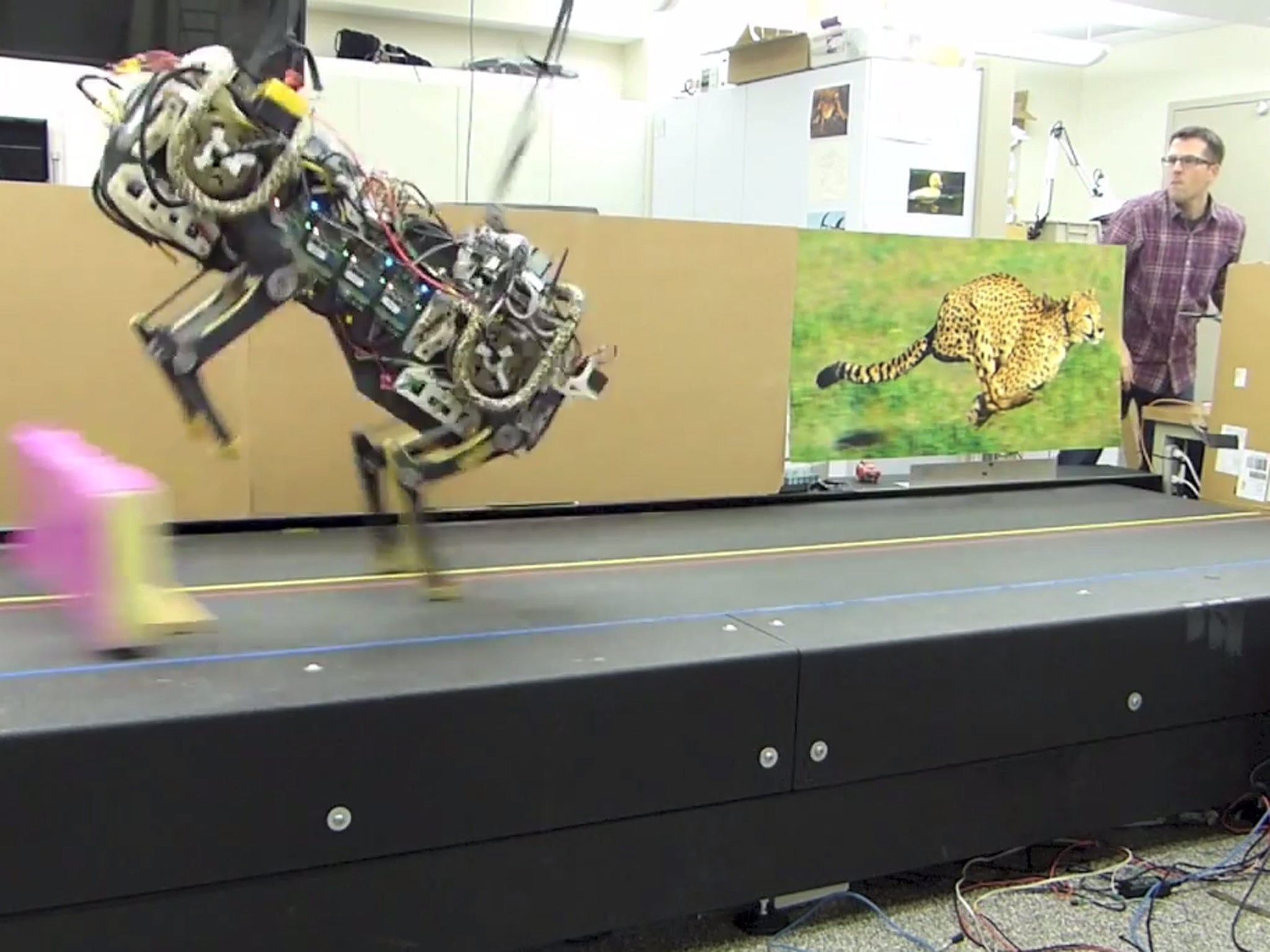MIT robots can now clear hurdles as they run
Jumping robots can leap over things half their height — and gets the robots one more step towards taking over

Your support helps us to tell the story
From reproductive rights to climate change to Big Tech, The Independent is on the ground when the story is developing. Whether it's investigating the financials of Elon Musk's pro-Trump PAC or producing our latest documentary, 'The A Word', which shines a light on the American women fighting for reproductive rights, we know how important it is to parse out the facts from the messaging.
At such a critical moment in US history, we need reporters on the ground. Your donation allows us to keep sending journalists to speak to both sides of the story.
The Independent is trusted by Americans across the entire political spectrum. And unlike many other quality news outlets, we choose not to lock Americans out of our reporting and analysis with paywalls. We believe quality journalism should be available to everyone, paid for by those who can afford it.
Your support makes all the difference.MIT scientists have trained a robotic cheetah to be able to jump over hurdles, making dropping objects no longer a way to outrun them as they take over the world.
The robot uses complex technologies to be able to plan out its path and ready up to jump, in the same way humans do. It can detect obstacles, work out how tall and far away they are, and then calculate the best time and way to jump to clear the obstacle.
The robot can then adjust itself on its way back to the floor, so that it can start running again with no break.
The robot has jumped over objects up to 18 inches tall, MIT said — almost half of its own height. It did that while still running at 5 miles per hour.
The robots will now be taken to the Olympics of terrifying robots, the Darpa Robotics Challenge. They will also present a paper at a conference in July, where they will lay out the technologies required to allow the robot to jump safely.
Those include LIDAR, a special system that uses lasers to map out terrain and keep the robot safe. That information is then fed into an algorithm that lets the robot detect obstacles.
“A running jump is a truly dynamic behavior,” Sangbae Kim, an assistant professor of mechanical engineering at MIT, said in a press release. “You have to manage balance and energy, and be able to handle impact after landing. Our robot is specifically designed for those highly dynamic behaviors.”
Researchers are now looking to get the robot to jump over obstacles on softer terrain, like grassy fields.
A number of companies are developing running robot cheetahs, in the hope that they can be used for transport and to develop even more complex robots. Competitors include the Google-owned Boston Dynamics, which showed off robots that can be kicked and go indoors.
Join our commenting forum
Join thought-provoking conversations, follow other Independent readers and see their replies
Comments